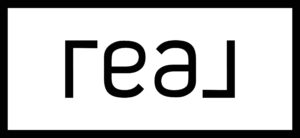
Top Red Flags to Look for When House Hunting
As an experienced real estate agent, I’ve seen my fair share of homebuyers fall in love with a house at first sight—only to discover hidden issues after moving in. Buying a home is one of the biggest investments you’ll make, so knowing what to look for during your search is crucial. Here are some major red flags to keep an eye on when house hunting:
1. Water Leaks & Damage
Water damage is one of the most common and costly issues in a home. Stains on ceilings or walls, peeling paint, warped floors, or a musty smell can all indicate past or ongoing water leaks. Water damage can lead to mold growth and structural issues, so be sure to ask about any visible stains or damp areas.
2. Roof Issues
A compromised roof can mean significant repair costs down the line. Look for missing or curling shingles, sagging areas, or signs of water damage in the attic. Roof repairs and replacements are expensive, so be sure to ask about the roof’s age and condition before making an offer.
3. Foundation Cracks & Structural Problems
Cracks in the foundation, uneven floors, and doors or windows that stick could be signs of serious structural problems. Small hairline cracks are normal, but large cracks, especially horizontal ones, could indicate foundation movement or settling issues. If you notice anything concerning, a professional foundation inspection is a must.
4. Plumbing Problems
Leaks, corroded pipes, and slow drains can all signal bigger plumbing issues. Check under sinks for signs of water damage, listen for unusual noises when running the faucets, and be wary of homes with outdated galvanized pipes, as they can be prone to rusting and clogs.
5. Low Water Pressure
Turn on the faucets and showerheads to test the water pressure. Weak water flow could indicate problems with the plumbing system, such as clogged pipes, an outdated water heater, or even more significant underlying plumbing issues.
6. Electrical Concerns
Faulty wiring can be a major safety hazard. Look out for flickering lights, outlets that don’t work, and outdated electrical panels. Older homes with knob-and-tube or aluminum wiring may require expensive upgrades to meet modern electrical standards.
7. Signs of Pest Infestation
Droppings, chewed wires, or small holes in walls and baseboards can indicate unwanted critters. Termites, rodents, and other pests can cause extensive damage to a home’s structure and require costly extermination and repairs.
8. DIY or Poorly Done Repairs
While some homeowners take pride in DIY projects, not all repairs are done to code. Look for uneven flooring, misaligned tiles, or patchy paint jobs, which can signal rushed or unprofessional work that might cause issues later on.
9. HVAC System Age & Condition
Heating and cooling systems are essential for home comfort, and replacing them can be costly. Check the age of the furnace, AC unit, and water heater. If they look old or haven’t been well-maintained, they may need replacement soon.
10. Neighborhood Red Flags
Beyond the house itself, take a good look at the neighborhood. Are there abandoned homes or excessive for-sale signs? How does traffic flow? Are there noise issues from nearby businesses or roads? Visiting the neighborhood at different times of the day can give you a better feel for the area.
Final Thoughts
House hunting can be exciting, but it’s important to stay vigilant and look beyond a home’s cosmetic appeal. If you notice any of these red flags, don’t hesitate to ask questions, request repairs, or bring in a professional inspector. A little extra diligence now can save you from costly headaches in the future!
If you’re looking for expert guidance in your home search, I’m here to help. Let’s find a home that meets your needs—without the hidden surprises!

Leave a Reply